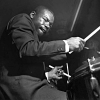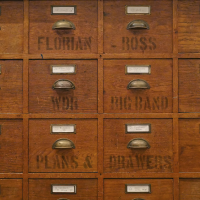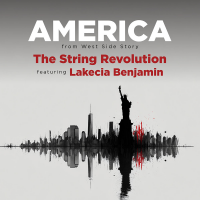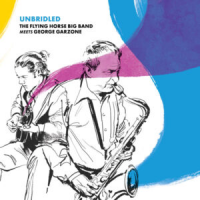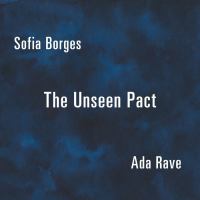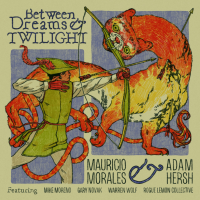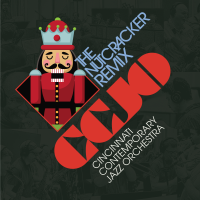Home » Jazz Articles » Album Review » Roy Brooks: The Free Slave
Roy Brooks: The Free Slave
The Left Bank Jazz Society, located in Baltimore's Famous Ballroom, was one of the most lively and vital venues for live jazz at the time. Its audience was knowledgeable, deeply engaged and passionately loyal, fostering an atmosphere that encouraged musicians to push their boundaries. At this particular event, the energy is electric from the very first notes.
Brooks had long been regarded as a consummate sideman, his rhythmic flexibility gracing the bands of Sonny Stitt, Yusef Lateef, and Chet Baker, among others. But this recording, only his second as a leader, reveals a creative restlessness that goes beyond simple accompaniment. His drumming here is commanding yet never overbearing. He drives, colours and comments with a conversational feel that elevates the group dynamic to a new level of insight.
The title track, "The Free Slave," opens the set with an extended performance that functions both as a declaration and a manifesto. The piece starts with a polyrhythmic statement from Brooks, which continues throughout, creating an atmosphere of liberation and intensity. Shaw's trumpet rides the rhythmic wave with majestic fervour, his lines filled with the bright, angular logic that would mark his later work. Coleman delivers a powerful interlude that blends blues sensibility with harmonic sophistication. Lawson and McBee alternate between vamps and runs, offering a rhythmic foundation and musical direction. "Understanding" showcases a more introspective side of Brooks' writing as he introduces an alluring samba rhythm that unfolds, revealing layers of lyricism and quiet determination. At the outset, McBee's bass resonates warmly and deeply. Shaw and Coleman's solos express a reflective mood with measured phrasing and controlled intensity. Brooks' drumming exemplifies restraint, maintaining a steady bossa nova beat.
McBee contributes the only non- Brooks composition, "Will Pan's Walk," a flowing, fast-paced, rhythmically intricate piece. Due to its lively tempo, each musician's task is demanding, especially for Brooks. Coleman's solos are full of creativity, and Shaw balances smoothness with his confident tone. Lawson solos on the keyboard with single-note embellishments, while McBee delivers an extended solo with skillful plucking. The closing "Five for Max" serves both as an homage to Max Roach and as a statement of purpose. Written as a samba groove in 5/4 time, Brooks showcases his signature rim clicks while exploring every part of the drum kit with structural clarity. Coleman's entrance adds a sense of urgency, with his phrasing carving through the time signature with intelligence. Shaw's performance is a masterclass in rhythmic dialogue, and Lawson and McBee reaffirm their musical identities with dexterity. The album remains one of those rare recordings that captures a moment of communal fire and individual excellence.
Track Listing
The Free Slave; Understanding; Will Pan's Walk; Five for Max.
Personnel
Roy Brooks
drumsWoody Shaw
trumpetGeorge Coleman
saxophone, tenorHugh Lawson
pianoCecil McBee
bassAlbum information
Title: The Free Slave | Year Released: 2025 | Record Label: Time Traveller Recordings
Tags
PREVIOUS / NEXT
Support All About Jazz
 All About Jazz has been a pillar of jazz since 1995, championing it as an art form and, more importantly, supporting the musicians who make it. Our enduring commitment has made "AAJ" one of the most culturally important websites of its kind, read by hundreds of thousands of fans, musicians and industry figures every month.
All About Jazz has been a pillar of jazz since 1995, championing it as an art form and, more importantly, supporting the musicians who make it. Our enduring commitment has made "AAJ" one of the most culturally important websites of its kind, read by hundreds of thousands of fans, musicians and industry figures every month.



